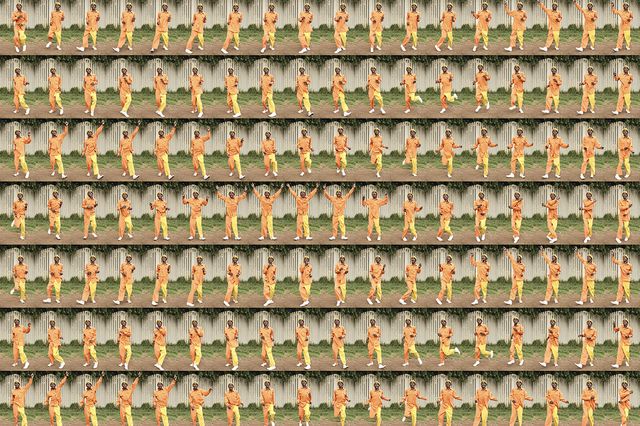The first U.S. exhibition to focus on the contemporary South African movement known as pantsula will be coming in January to the Fowler Museum at UCLA.
The photographs in “Pantsula 4 LYF: Popular Dance and Fashion in Johannesburg” narrate a multigenerational culture in the townships of Johannesburg that has grown and changed from its origins in the mid-20th century as a fashion movement, inspired by Jazz-era America and Europe, to the present-day dance culture that looks to both South African dance styles and American hip-hop. This is the first solo exhibition by South African photographer Chris Saunders.
“Saunders, who is primarily a fashion and commercial photographer, captures images that entice visitors with a phenomenon that is fresh yet familiar,” said Erica Jones, exhibition curator.
The exhibition includes an introductory film, more than 40 posed and action photographs, and videos of pantsula dancers — both soloists and crews. It will be on view in the Fowler Museum’s Goldenberg Galleria from Jan. 29 through May 7, 2017.
Pantsula, which in Zulu means “to waddle like a duck,” influences how members of the dance crews talk, dress and move. Dancers perform outdoors in public spaces, taking part in a township subculture viewed by many as more than just dance. One of the City Boyz crew members, Thebongang, says, “Pantsula is a dance. It’s my life, my joy. It shows the way I live.”
The culture that became pantsula began in the 1950s and 1960s in the Johannesburg suburb of Sophiatown, a hub of jazz, blues, fashion, writing and politics. Its practitioners have a long history of looking to America for fashion and dance inspiration. Pantsula dancers are still distinguished by their American-inspired wardrobes favoring Converse sneakers, Dickies work pants, collared shirts, and sometimes white gloves or bucket hats. Crew members always dress similarly, if not in identical outfits, and pride themselves on being well dressed.
The sounds of pantsula—kwaito (house music popular in South Africa) paired with the whistles of dancers and complex athletic rhythmic choreography inspired by Southern African Sotho dances and American b-boying, popping and clowning—can be heard throughout Johannesburg’s townships.
The images in “Pantsula 4LYF” illustrate how members focus on producing bold and exciting dance routines, and in one section of the exhibition Saunders uses a series of contact sheet prints, similar to the 19th-century photographer Eadweard Muybridge’s early studies of motion, to document the hundreds of precise steps a pantsula will execute in a brief dance.
Saunders began documenting pantsula crews in 2010. His work was made in conjunction with German art historian Daniela Goeller, who studies pantsula history, fashion, and dance. Their collaboration unites Saunders’s purely aesthetic interests with Goeller’s more archival pursuits.
“Pantsula 4LYF” was organized by Erica Jones, Assistant Curator of African Arts at the Fowler Museum at UCLA.
The Fowler Museum at UCLA is one of the country’s most respected institutions devoted to exploring the arts and cultures of Africa, Asia and the Pacific, and the Americas. The Fowler is open Wednesdays from noon until 8 p.m., and Thursdays through Sundays from noon to 5 p.m. The museum is closed Mondays and Tuesdays. The Fowler Museum, part of UCLA Arts, is located in the north part of the UCLA campus. Admission is free. Parking is available for a maximum of $12 in Lot 4. For more information, the public may call 310-825-4361 or visit fowler.ucla.edu.





